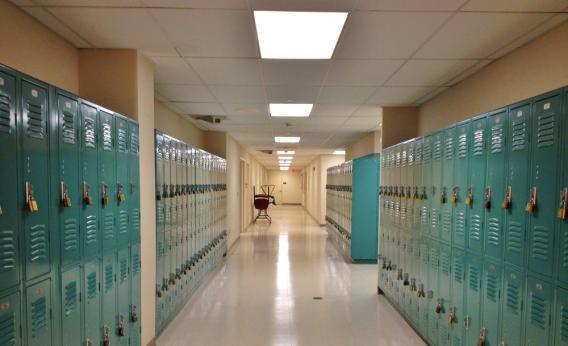Which were you? Popular kid, nerd, normal, artist, or loner? Wait, don’t answer that—instead, tell me: What makes that question so seductive?
Not the answer, although the answer may be more important than you realize, according to a long, rich essay by Jennifer Senior in New York Magazine about the enduring grip of our high-school years.
Senior pulls together a wealth of studies on adolescence to argue that our experiences in high school mold how we see ourselves, cope with stress, and relate to others forever. She floats a few explanations for why this might be: Grades nine through 12 coincide with the fine-tuning of the prefrontal cortex, which processes abstractions and controls self-image, so that teenagers are constantly converting their impressions of the outside world into identity-grist. (Senior’s example: I like the Allman Brothers becomes I am the type of person who likes the Allman Brothers.) And teen brains are bathed in dopamine, which makes them feel everything, the good and the bad, hyperintensely. The teenage years also take on a strange luminance in memory; it makes sense that oldsters might use those reminiscences as identity building blocks.
While high school is formative, though, it can also be hell. Senior views the fact that it has such a gravitational pull over the rest of our lives as semidisastrous. Her money quote: “Most American high schools are almost sadistically unhealthy places to send adolescents.”
This is a strong claim, but Senior backs it up by discussing how, during this vulnerable time of self-formation and raging emotions, teenagers actually have no idea how to read social cues. They’re laughably bad at figuring out when they’ve been accepted or rejected. She cites a study concluding that only 37 percent of adolescent friendships are reciprocal. At the same time, they are feverishly trying to discover where they stand in a huge, linoleum-tiled terrarium of people with whom they have little in common besides age. Nuances don’t exactly thrive in such a situation—you’re liable to be sorted, labeled, maybe stigmatized, based on some broad stereotype rooted in the clothes you wear or how much weight you need to lose before you look like Taylor Swift. For those of us who weren’t Math Nerds, the equation is: painful sensitivity to what others think of you PLUS uncertainty about what others think of you, thanks to terrible people-reading skills PLUS a general tendency to organize the social world into cliques that don’t really reflect reality EQUALS can I please just graduate, right now? Or, as Senior says, “sadistically unhealthy.”
Then, she suggests, we carry our dysfunctional high-school dynamics with us into the real world. Outcasts and dorks nurse an eternal shame. Athletes radiate aggression. The one exception, oddly enough, concerns bookish girls and princesses: Though high school royals reported more self-confidence than brains did at age 16, by age 24 the numbers had switched, with the princesses registering higher levels of insecurity and the bookworms feeling, on the whole, pretty OK with themselves. It’s unclear why the same dynamic swap doesn’t happen with the boys. Could it be that—gasp—the adult working world values women more for their minds and characters, which builds confidence?
Full disclosure: I enjoyed high school. Like most people, I am not sure where my peers seated me in the metaphorical cafeteria—to the extent they thought about it—but I always considered myself somewhere between English Nerd, Music Nerd, and Nondescript. (I hope there wasn’t a category for Generally Disliked and Oblivious.) Some of these self-conceptions have held up over time and some haven’t: I don’t play the piano as much as I used to, for instance, so I don’t really think of myself as a music person anymore. But even if the labels no longer apply, I’m still surprised—and a little discomfited—by how much pleasure I take in reminiscing about who fell in what box. It’s a favorite topic when my high-school pals and I meet up: assessing who we were then versus where we are now. In the same way, I love when college or post-college friends reveal their adolescent personas; I even love reading articles like Senior’s, in which the evolving social positions of characters like shy valedictorian Kenji and golden footballer Josh are painstakingly analyzed.
Where does this fascination come from? Why does it persist? Is it just our weakness for nostalgia? A human love of taxonomy? Over at Jezebel, Lindy West responded to the New York piece by giving advice to—and perpetuating—five high-school archetypes: Brains, Princesses, Athletes, Basket Cases, and Criminals. Motherlode columnist KJ Dell’Antonia aimed for a more practical approach, cautioning parents not to let their own high-school biases color the way they deal with their teenage children. “We may still be nerds, pretty girls or jock stars,” she writes, reviving the categories yet again, but “if we can give our teenagers the opportunity to follow their passions toward larger groups of people who share them, they’ll also get a shot at internalizing a broader view of who they are.”
Which is, of course, well and good and desirable. But I can’t help thinking that it’s never going to happen. What makes Dell’Antonio so sure that these “larger groups of people” can even exist in high school? Why should the next generation be any different from ours? We’re half in love with these damaging labels, which once helped us make sense of a bustling, chaotic ecosystem we may never fully leave behind. And to a certain extent, they still help us make sense of the world today. I don’t think they’re going anywhere.
